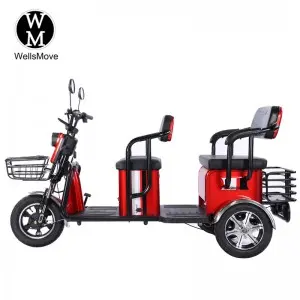Are three-wheel scooters safe?
Three-wheel scooters have become increasingly popular in recent years, providing a fun and convenient mode of transportation for children and adults alike. However, as with any form of wheeled transport, safety is a vital consideration. Many people wonder, “Are three-wheel scooters safe?” Let’s explore the safety concerns of these scooters and how to ensure a safe riding experience.
stability and balance
One of the main reasons three-wheeled scooters are considered safe is their greater stability and balance compared to traditional two-wheeled scooters. Additional wheels provide greater support and help the rider maintain balance more easily, especially when traveling on uneven or bumpy surfaces. This stability is especially beneficial for young riders who are still developing coordination and motor skills.
Additionally, the wider wheelbase of a three-wheeled scooter helps improve its stability and reduces the risk of tipping over during sharp turns or sudden maneuvers. This feature provides riders with a greater sense of security and confidence, making the overall riding experience safer and more enjoyable.
security features
Three-wheel scooter manufacturers put safety first by incorporating various features designed to protect riders from potential dangers. Many models are equipped with reliable braking systems that allow riders to slow down and stop effectively, reducing the risk of a collision or accident. Additionally, some scooters feature adjustable handlebars and ergonomic grips that promote better control and minimize the possibility of losing balance while riding.
Additionally, some three-wheeled scooters are designed with durable, non-slip footrests to ensure the rider maintains a solid footing at all times. These features are crucial to preventing slips and falls, especially when riding in wet or slippery conditions. By prioritizing safety features, manufacturers aim to provide passengers with a safe and reliable mode of transportation.
Age-appropriate models
When considering the safety of a three-wheel scooter, it’s important to choose a model that’s appropriate for the rider’s age and skill level. Many manufacturers offer a range of scooters designed for different age groups, with features and specifications designed to suit the needs of toddlers, teenagers and adults. By choosing an age-appropriate scooter, riders can enjoy a safer, more comfortable ride.
For younger children, a three-wheel scooter with a low deck and wide, stable platform is ideal for promoting balance and coordination. These models often come with adjustable handlebars to accommodate rider growth and ensure a good fit for the rider. In addition, some scooters are equipped with steering mechanisms that limit the turning radius to prevent accidents caused by sudden sharp turns.
For older riders, three-wheel scooters with larger wheels and increased shock absorption can provide a smoother, more stable ride, especially when traveling over rough or uneven terrain. These features help provide a safer, more comfortable experience, reducing the impact of bumps and vibrations on the rider’s body.
Safety equipment and precautions
In addition to the safety features of the scooter itself, riders can further enhance its safety by wearing appropriate protective gear and adhering to safety precautions. Helmets are essential to protect your head in the event of a fall or collision and should always be worn when riding a scooter. Elbow and knee pads can also provide additional protection, especially for younger riders who are still learning to balance and maneuver their scooters effectively.
It is important for riders to become familiar with the rules of the road and develop safe riding habits. This includes obeying traffic laws, yielding to pedestrians, remaining alert and aware of your surroundings. By practicing responsible riding behaviour, scooter enthusiasts can create a safer and more harmonious environment for all road users.
Regular maintenance and inspections of your scooter are also crucial to ensure safety. Checking the brakes, wheels and overall condition of your scooter can help identify any potential issues that could compromise safety. Keeping your scooter in good working order with routine maintenance can prevent accidents caused by mechanical failure or malfunction.
Supervisory education
For young riders, adult supervision and guidance are crucial to promoting safe scooter use. Parents and caregivers should educate their children on the importance of safety and instruct them on how to ride scooters responsibly. This includes teaching children how to brake, steer and negotiate obstacles effectively, as well as emphasizing the importance of wearing protective gear.
Additionally, parents can set boundaries and guidelines for where children are allowed to ride scooters, especially in areas with heavy traffic or potential dangers. By setting clear rules and expectations, parents can help their children develop safe riding habits and minimize the risk of accidents.
in conclusion
In summary, three-wheel scooters can be a safe and enjoyable mode of transportation, offering enhanced stability, safety features, and age-appropriate design. By prioritizing safety gear, responsible riding behavior and regular maintenance, riders can further enhance the safety of their scooter experience. With proper supervision and education, children can learn to ride scooters safely and responsibly, creating a positive and safe riding environment for all enthusiasts. Ultimately, while no mode of transportation is completely risk-free, three-wheel scooters can be a safe and enjoyable option if used responsibly and with safety in mind.
Post time: May-24-2024



